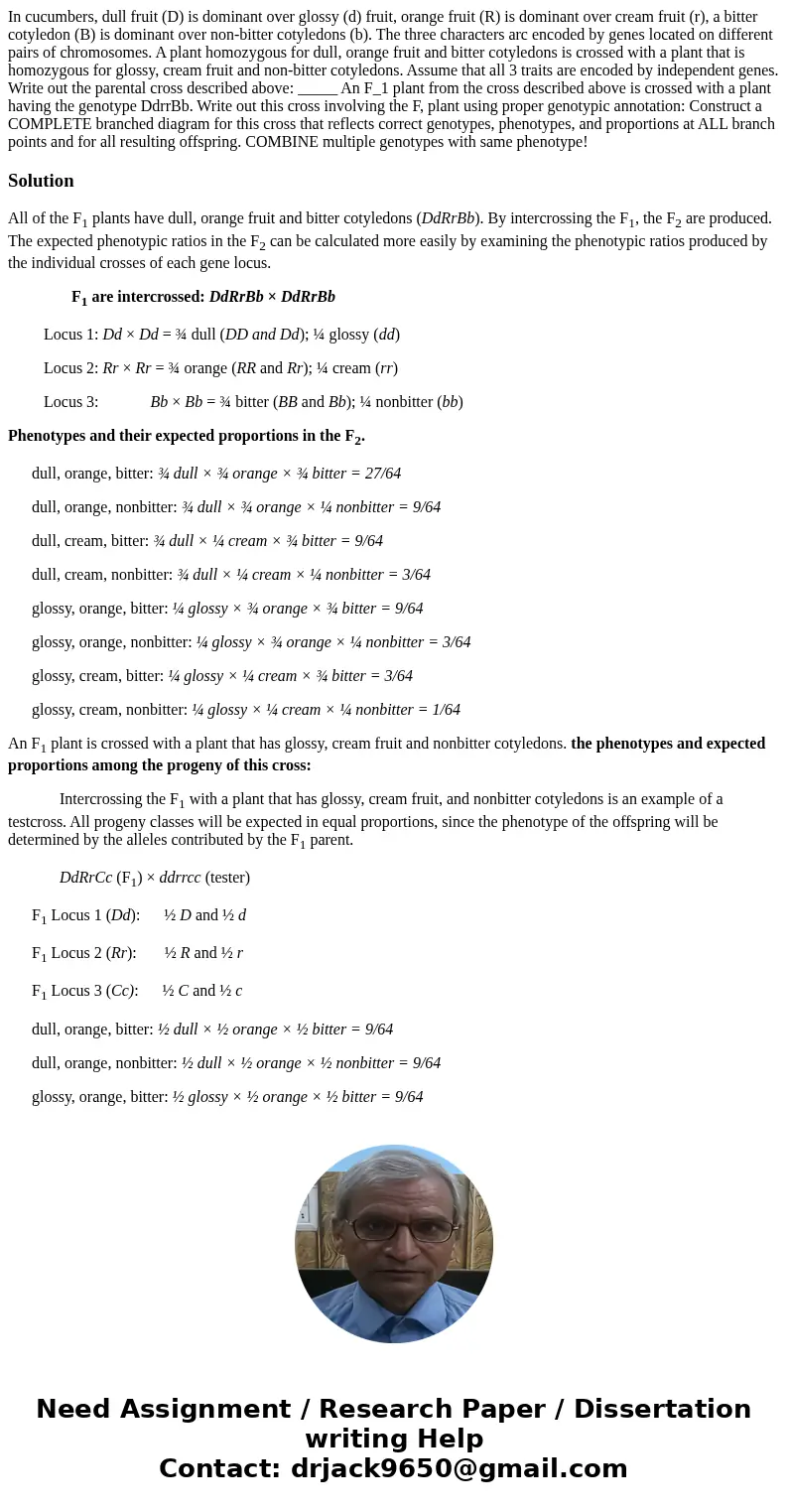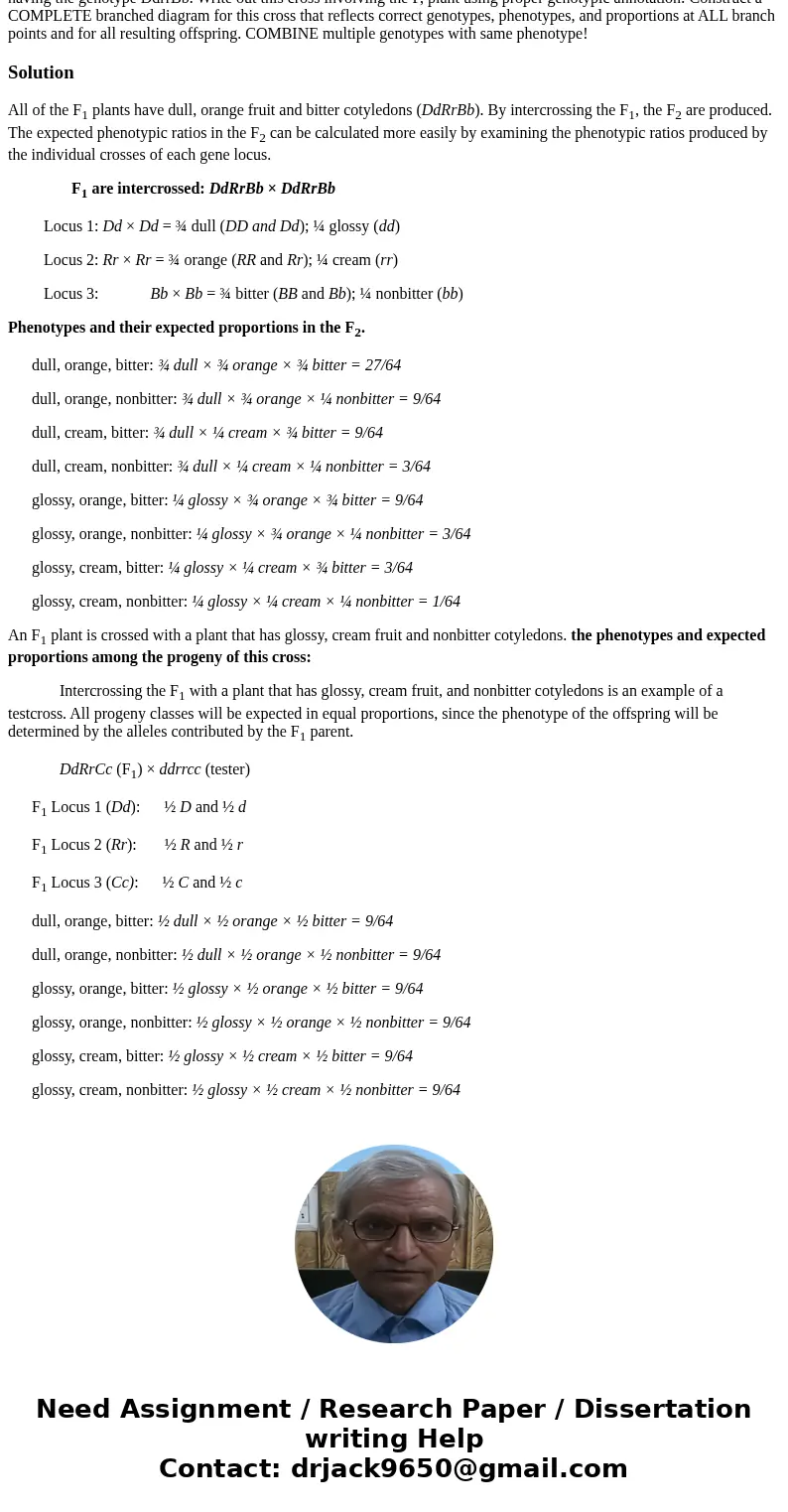In cucumbers dull fruit D is dominant over glossy d fruit or
Solution
All of the F1 plants have dull, orange fruit and bitter cotyledons (DdRrBb). By intercrossing the F1, the F2 are produced. The expected phenotypic ratios in the F2 can be calculated more easily by examining the phenotypic ratios produced by the individual crosses of each gene locus.
F1 are intercrossed: DdRrBb × DdRrBb
Locus 1: Dd × Dd = ¾ dull (DD and Dd); ¼ glossy (dd)
Locus 2: Rr × Rr = ¾ orange (RR and Rr); ¼ cream (rr)
Locus 3: Bb × Bb = ¾ bitter (BB and Bb); ¼ nonbitter (bb)
Phenotypes and their expected proportions in the F2.
dull, orange, bitter: ¾ dull × ¾ orange × ¾ bitter = 27/64
dull, orange, nonbitter: ¾ dull × ¾ orange × ¼ nonbitter = 9/64
dull, cream, bitter: ¾ dull × ¼ cream × ¾ bitter = 9/64
dull, cream, nonbitter: ¾ dull × ¼ cream × ¼ nonbitter = 3/64
glossy, orange, bitter: ¼ glossy × ¾ orange × ¾ bitter = 9/64
glossy, orange, nonbitter: ¼ glossy × ¾ orange × ¼ nonbitter = 3/64
glossy, cream, bitter: ¼ glossy × ¼ cream × ¾ bitter = 3/64
glossy, cream, nonbitter: ¼ glossy × ¼ cream × ¼ nonbitter = 1/64
An F1 plant is crossed with a plant that has glossy, cream fruit and nonbitter cotyledons. the phenotypes and expected proportions among the progeny of this cross:
Intercrossing the F1 with a plant that has glossy, cream fruit, and nonbitter cotyledons is an example of a testcross. All progeny classes will be expected in equal proportions, since the phenotype of the offspring will be determined by the alleles contributed by the F1 parent.
DdRrCc (F1) × ddrrcc (tester)
F1 Locus 1 (Dd): ½ D and ½ d
F1 Locus 2 (Rr): ½ R and ½ r
F1 Locus 3 (Cc): ½ C and ½ c
dull, orange, bitter: ½ dull × ½ orange × ½ bitter = 9/64
dull, orange, nonbitter: ½ dull × ½ orange × ½ nonbitter = 9/64
glossy, orange, bitter: ½ glossy × ½ orange × ½ bitter = 9/64
glossy, orange, nonbitter: ½ glossy × ½ orange × ½ nonbitter = 9/64
glossy, cream, bitter: ½ glossy × ½ cream × ½ bitter = 9/64
glossy, cream, nonbitter: ½ glossy × ½ cream × ½ nonbitter = 9/64


 Homework Sourse
Homework Sourse